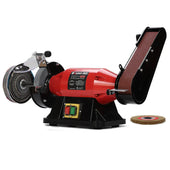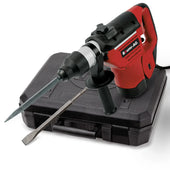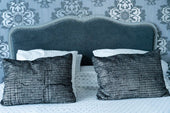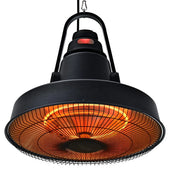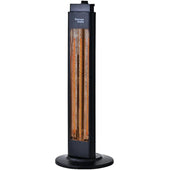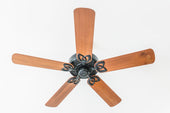Introduction: The Coffee Table's Place in Modern Life
The coffee table holds a central role in the modern home, blending functionality with aesthetic appeal. Its positioning within living spaces reflects its importance, often serving as a focal point for social interactions, decor, and daily activities. Unlike its predecessors, which were primarily utilitarian, the modern coffee table caters to the dynamic needs of contemporary lifestyles.
Its versatility extends beyond basic utility, accommodating a range of purposes from displaying decorative objects to hosting casual gatherings. Stylistically, coffee tables are crafted from diverse materials such as wood, glass, and metal, allowing seamless integration into varying interior design schemes. As living spaces have evolved, these tables have become indispensable.
Origins and Early Evolution of Coffee Tables
The coffee table's earliest origins trace back to the late Victorian era, evolving from low tables used in drawing rooms. Emerging primarily in Britain during the late 19th century, these tables were designed to support tea service and social gatherings. Inspired by Ottoman and Japanese furniture styles, the coffee table took cues from their low, multifunctional structures.
Traditionally constructed from wood, these early models provided both functionality and decorative appeal. By the early 20th century, they began to appear increasingly in American homes, reflecting shifts in furniture trends towards informal living spaces. Over time, their design adapted to suit diverse interiors, blending elegance with practicality.
The Rise of Tea Culture and Its Influence
The advent of tea culture in the 17th century coincided with the refinement of social gatherings. Tea quickly became a symbol of sophistication and tradition, fostering an environment where furniture evolved to accommodate this emerging cultural trend. As tea drinking gained popularity, surfaces for serving tea flourished, leading to the creation of specialised tables.
- Influence on Design: Tea tables transformed living spaces with intricately carved legs and elegant finishes, catering to the aesthetic appeal of the burgeoning tea rituals.
- Social Impact: Tea drinking fostered gatherings that prioritised decorum and etiquette, reflected in the design and arrangement of furniture in sitting rooms. During Days when such rituals shaped daily life.
This shift in lifestyle significantly shaped functional and decorative furniture, solidifying table designs as the centrepiece of social interaction.
Industrial Revolution: A Turning Point for Furniture Design
The Industrial Revolution introduced transformative changes to furniture-making, including the rise of mass production techniques. Prior to this era, coffee tables were handcrafted, showcasing intricate artistry and expensive materials. The mechanisation of production made furniture accessible to a broader audience, as costs decreased due to streamlined manufacturing processes. With this shift, new materials like steel and glass were integrated, creating modern and experimental designs.
Craftsmanship evolved alongside emerging technologies, paving the way for interchangeable parts and modular furniture. The ability to replicate pieces ensured uniformity, catering to changing consumer tastes. Transitioning from purely ornamental purposes, coffee tables gained functional roles within homes.
Victorian Elegance: Coffee Tables in Formal Parlour Settings
During the Victorian era, coffee tables emerged as essential furnishings in formal parlours, showcasing elegance and refinement. Their designs often featured ornate woodwork, intricate carvings, and rich finishes like mahogany or walnut. These tables were crafted not merely for function but as symbols of social standing, complementing lavish interiors characterised by heavy drapery and upholstered seating.
Victorian parlours prioritised elaborate tea and coffee service rituals, and these tables provided a central space for hosting guests. Decorative accents such as lace runners, vases, or brass candlesticks adorned the surface. Transitioning from utility to art, coffee tables reflected Victorian ideals of sophistication and formality.
The Role of Coffee Tables in 20th-Century Interior Design
The 20th century redefined furniture design, with coffee tables symbolising a blend of form and function in interior spaces. Evolving from Victorian-era tea tables, the coffee table became an essential focal point in living rooms. Modernist movements like Bauhaus introduced minimalistic, functional designs, favouring geometric shapes and materials such as glass, steel, and wood. Mid-century modern design further emphasised organic forms and clean lines.
Coffee tables served practical purposes while reflecting cultural shifts. For example:
- Post-war eras focused on simplicity and affordability.
- Space Age-inspired designs featured futuristic aesthetics.
- Pop Art influences embraced bold colours and unconventional forms.
By the late century, eclectic styles unified tradition and innovation.
Materials and Craftsmanship Through the Ages
Wood has been a dominant material in coffee table construction, particularly in earlier centuries when hand-carved designs were favoured. Oak, mahogany, and walnut became popular for their durability and aesthetic appeal. Metalwork emerged during the Industrial Revolution, bringing iron and brass frameworks into coffee table design, often paired with glass tops for a more refined look. The mid-20th century introduced materials such as acrylics and laminates, reflecting modern tastes and affordability. Contemporary coffee tables frequently feature mixed materials, like reclaimed wood and tempered glass, highlighting sustainability and artistic ingenuity. Each shift in material choice mirrors the era's evolving craftsmanship and decorative trends.
Mid-Century Modern: Iconic Styles and Innovations
The mid-20th century saw coffee tables transformed into bold design statements. Inspired by the Modernist movement, clean lines, functional forms, and organic materials became defining features. Designers like Isamu Noguchi pioneered sculptural coffee tables that combined art with utility, such as his 1947 biomorphic table with its glass top and curved wooden base.
Natural materials like teak and walnut dominated, paired with sleek finishes to emphasise simplicity. Low-profile silhouettes aligned with the era's minimalist aesthetic, creating versatile, unpretentious pieces. Clever innovations, such as hidden compartments and nesting capabilities, added practicality. Chrome accents and tapered legs further enhanced the era's futuristic yet timeless appeal, leaving a lasting legacy on furniture design.
Cultural and Regional Variations in Coffee Table Design
Coffee table designs reflect regional aesthetics and cultural influences, resulting in a rich diversity across the world. In Japan, minimalist designs dominate with low wooden tables inspired by tatami traditions, prioritising functionality and a strong connection to nature. Scandinavian styles focus on clean lines, light wood, and simplicity, aligning with their "hygge" concept of cosy living.
In Middle Eastern cultures, intricately carved coffee tables often feature mother-of-pearl inlays, showcasing artisanal craftsmanship. India highlights vibrant hand-painted motifs and robust teakwood construction. Meanwhile, North American designs lean towards practicality, frequently incorporating storage options and multi-functional elements.
These variations exemplify different priorities, from formality to comfort and artistic expression, influenced by local traditions and lifestyles.
The Impact of Technology and Sustainability on Contemporary Trends
Advancements in manufacturing and design have significantly transformed coffee tables over the years. Modern technology allows for materials such as tempered glass, lightweight metals, and engineered wood to be moulded into innovative shapes, enhancing durability and aesthetic appeal. Sustainable practices, on the other hand, influence material choices, with reclaimed wood and recycled metals gaining popularity for eco-friendly designs.
Technology also introduces smart features, like integrated charging stations and touch-sensitive surfaces, blending utility with sophistication. The growing interest in sustainability drives demand for ethical production methods and minimalist designs, reflecting societal values. Together, these factors shape coffee tables into multifunctional staples of modern living spaces.
Coffee Tables as Functional Art Pieces in Modern Homes
Coffee tables today transcend mere functionality, blending utility with artistic expression to enhance modern interiors. These pieces serve as the creative intersection of design and practicality, making them focal points in living spaces.
Contemporary designs often use materials like glass, reclaimed wood, or polished metal to craft sleek, sophisticated tables. Unique shapes such as geometric forms or asymmetrical designs bring visual intrigue. Many incorporate multifunctionality, such as built-in storage or adjustable heights.
Handcrafted tables showcasing intricate craftsmanship reflect cultural influences, offering individuality. Through their design and materiality, coffee tables elevate living spaces into personal galleries, resonating with both functionality and art.
Conclusion: The Timeless Appeal of Coffee Tables
Coffee tables have transcended their original purpose, becoming a staple in living spaces worldwide. They serve not only as functional furniture but as a canvas for personal style and social interaction. From ornate designs of the Victorian era to sleek minimalism of modern interiors, their evolution reflects changing tastes and lifestyles. Materials like glass, wood, and metal cater to diverse preferences, making them versatile for any décor. Additionally, they bridge practicality and elegance by hosting various activities — from tea gatherings to casual lounging. This adaptability ensures that coffee tables remain integral, embodying both tradition and contemporary flair.



